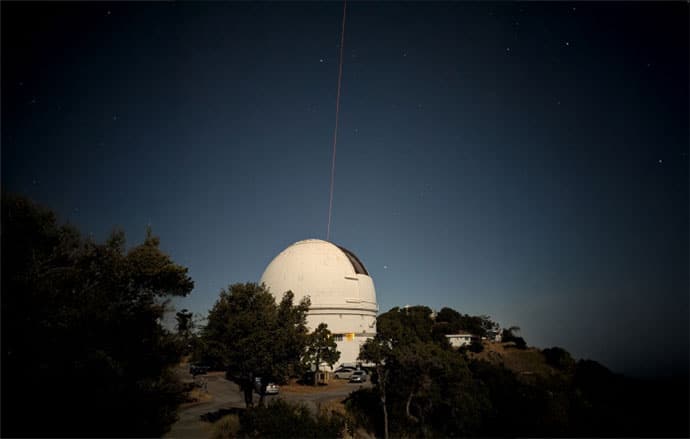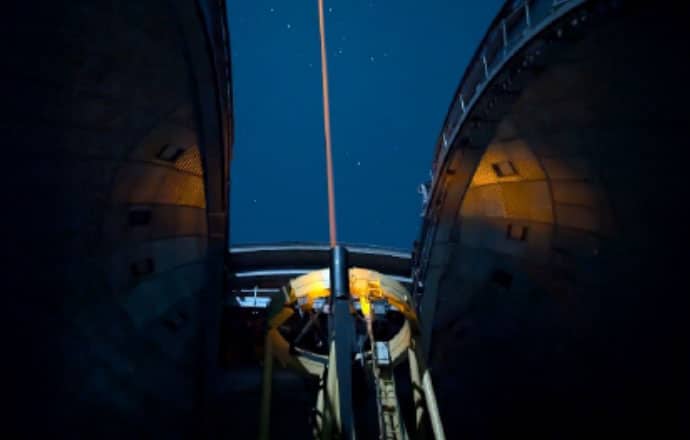
Figure 1 – Sodium beacon exiting Shane Telescope dome at the Lick Observatory (September 6, 2025)

Figure 2 – Sodium beacon through the dome in the early morning hours of September 7, 2025
In early September 2025, Areté in collaboration with researchers from the University of California Santa Cruz (UCSC) and the UCO Lick Observatory, performed an on-sky demonstration of a Sodium Laser Guide Star System (SLGS) developed by Areté. Figures 1 and 2 are pictures of the 589nm SLGS beam exiting the observatory dome on the night of September 6/7.
The SLGS is based on an Optically Pumped Semiconductor Laser (OPSL). Areté’s design represents the first use of OPSL technology for this application. OPSLs are gravity insensitive and extremely compact in comparison to other lasers used to generate sodium guide stars. Light from the laser was propagated to the launch telescope using a hollow core photonic crystal fiber. The compact SLGS assembly is mounted directly to the Shane telescope obviating the need for a dedicated laser room.
During this early campaign the SLGS was used in conjunction with the Shane telescope Adaptive Optics (AO) control system to measure sodium returns and to observe stars and clusters of stars of interest to Lick and UCSC astronomers. The SLGS provided sufficient sodium returns to allow the AO control loop to be closed thereby achieving greatly enhanced spatial resolution. Strehl ratios of 0.3 were observed. As a benchmark, using a magnitude 8 natural guidestar, a Strehl ratio of 0.4 was achieved. A marked accomplishment of the campaign was sufficient resolution to identify a binary star not previously catalogued as such.
Future efforts will involve optimization of this early prototype system and to further reduce the size of next generation systems. Areté’s goal is to be able to produce SLGSs at lower size and cost in comparison to current products. Doing so will enable small observatories to make use of AO and sodium guidestars and may also find application in ground to space laser communications and space situational awareness. For further details, please contact Mr. Steve Rako at srako@arete.com